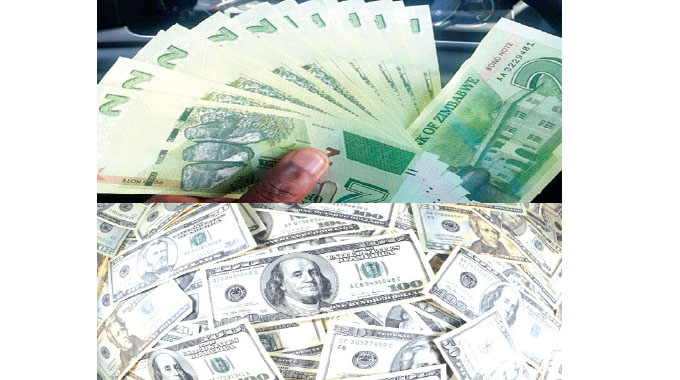
eBusiness Weekly

Kudzanai Sharara
This week, Supreme Court Judge Chief Justice Luke Malaba, made a ruling that was described by many as landmark, while at the same time drawing an outcry from some lenders and commentators — lawyers included.
Borrowers obviously are smiling all the way to the bank.
The ruling, made in an appeal case involving Zambezi Gas Zimbabwe (Pvt) Limited against mining services provider N.R. Barber (Pvt) Ltd and the Sherriff of Zimbabwe, was that debts incurred before February 22 last year must be settled in the local currency at a 1:1 rate against the US dollar in line with Statutory Instrument (SI) 33 of 2019.
That debts incurred before February 22 last year must be settled in the local currency at a 1:1 rate against the US dollar should not have drawn an outcry because SI 33 of 2019 is almost a year old.
Banks have already been complying, accepting debt repayments from borrowers at the same terms as those when the debts were incurred during the multi-currency era.
The Cotton Company of Zimbabwe (Cottco) is one of those debtors that reportedly paid off its US$56 million debt to Zimbabwe Asset Management Company (Zamco) in local Zimbabwean dollars.
ZAMCO chief executive Dr Cosmas Kanhai confirmed to Business Weekly that indeed all the loans it had acquired from banks will be paid back in local Zimbabwe dollars and ultimately Government will honour the TBs used to acquire the loans in local Zimbabwe dollars.
Last week he told our sister paper The Herald that (Zamco) has resolved over $$420 million Non-Performing Loans (NPLS) out of US$1,13 billion bad debts the central bank’s special purpose vehicle acquired from local banks.
With regards the ruling, what should have been put into question is that even “judgement debts” are part of those debts that should be settled in local currency at one to one with the US dollar.
In making the judgement Justice Malaba, referenced Section 4 (l)(d) of SI 33/19 which states that, for accounting and other purposes, all assets and liabilities that were, immediately before the effective date, valued and expressed in United States dollars (other than assets and liabilities referred to in section 44C(2) of the principal Act) shall on and after the effective date be deemed to be values in RTGS dollars at a rate of one-to-one to the United States dollar.
While there is no specific part of that section which references to “judgement debts” what is clear is that it talks of all assets and “liabilities” which encompasses all debts, red, blue, and judgement debts. What is important is whether that debt was “immediately before the effective date, valued and expressed in United States dollars”.
The belated outcry
Following the judgement, there was an outcry from market watchers and commentator alike as if this was something new. What Justice Malaba’s judgement has just done is to interpret or confirm the law and unless someone challenges and wins a case against the constitutionality of SI33 of 2019, then all debts incurred before February 22 will be settled in the Zimbabwe dollar and off cause with serious ramifications to lenders.
By December 2018, the banking sector had loans amounting to US$4,22 billion, and if these loans were not paid back by February 22, 2019 the bulk of them, unless there were some with special arrangements, would be paid back in Zimbabwean dollars.
Such loans if they were not paid off by the effective date, would be worth 6 percent of their original value.
Government’s domestic debts prior SI33 were approximately US$10 billion and these too shall be settled in the local Zimbabwe dollars at a fraction of their previous worth.
The banks also sold their US dollar non — performing loans to ZAMCO in exchange of Treasury Bills worth US$1,1 billion dollars at some point. But when Government finally honours its TBs obligation it will be paying in the Zimbabwean dollars putting a further dent on financial institutions.
Ultimately its actually bank depositors who will bear the brunt of SI33 of 2019 because it’s their money that banks used to buy TBs in the first place. The trail of asset destruction, a result of SI33 of 2019, extends across the entire economy. It has hit hard on pension funds, insurance houses and on stock market investments. All near assets like stocks, TBs, bonds among others are now valued in the local Zimbabwe dollars at one to one for every US dollar value prior to February 22, 2019.



